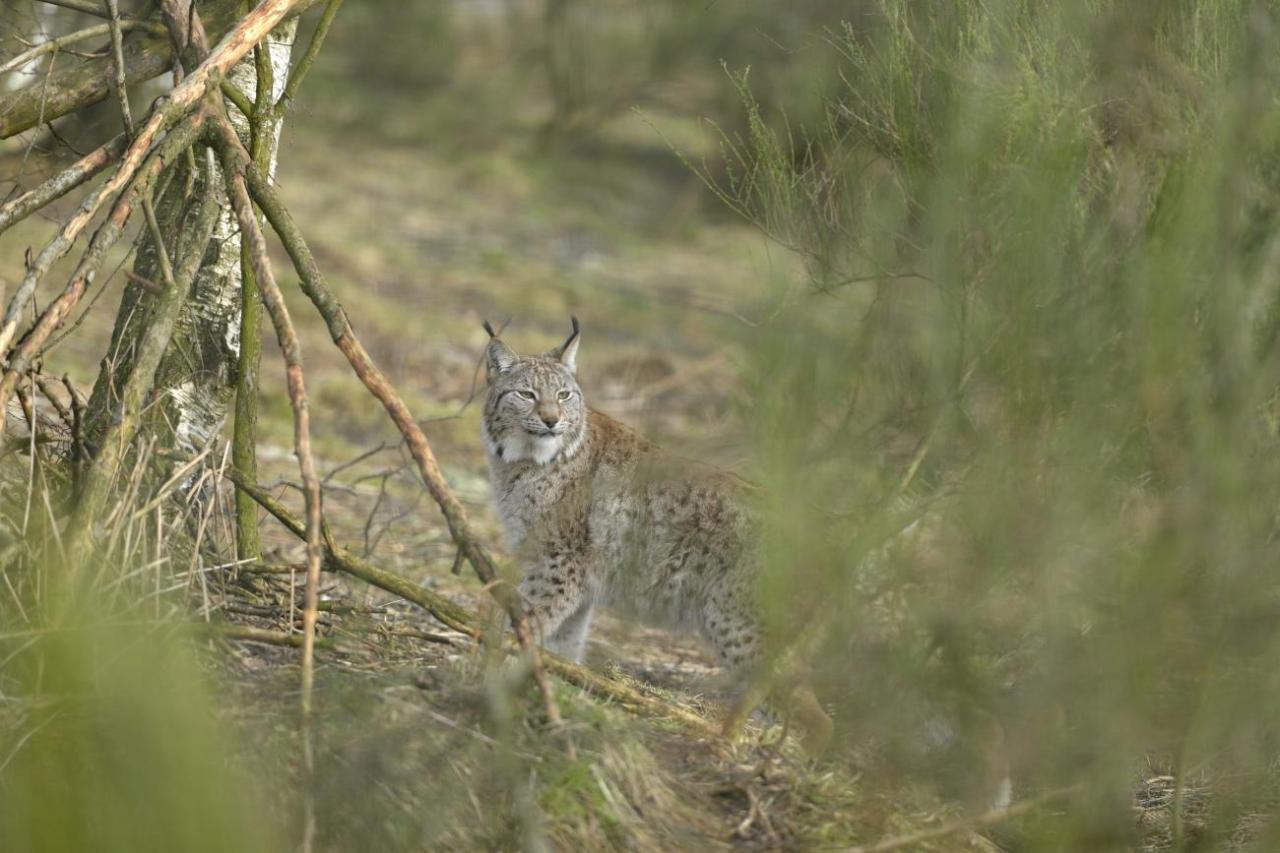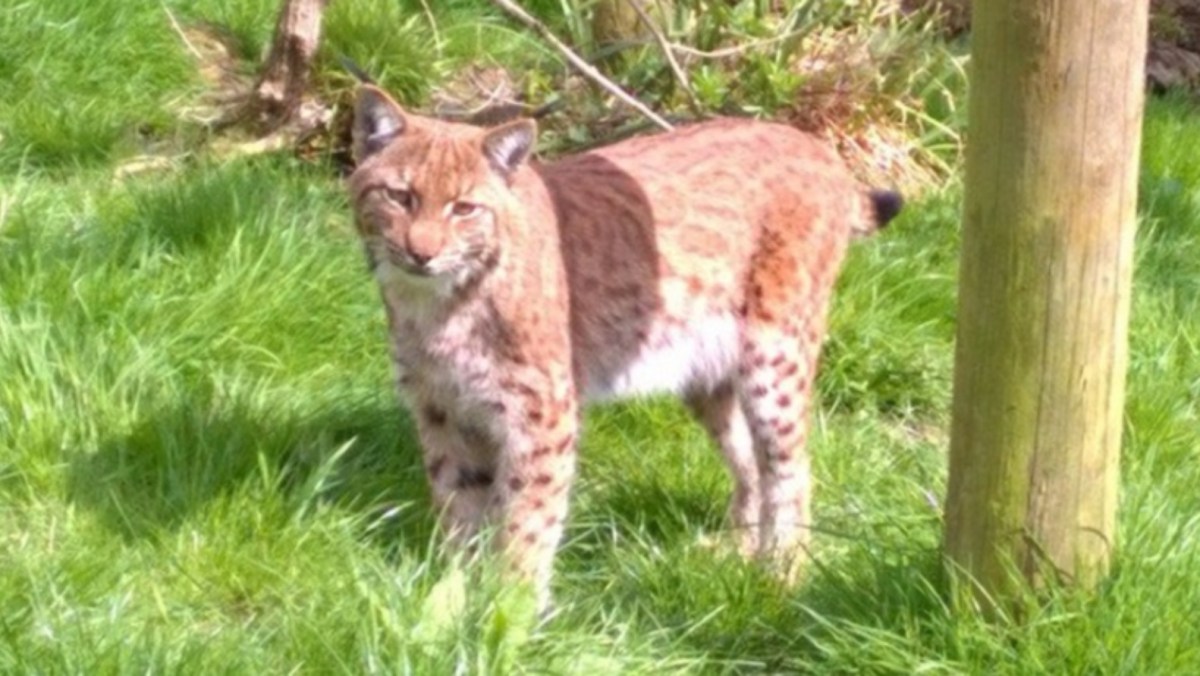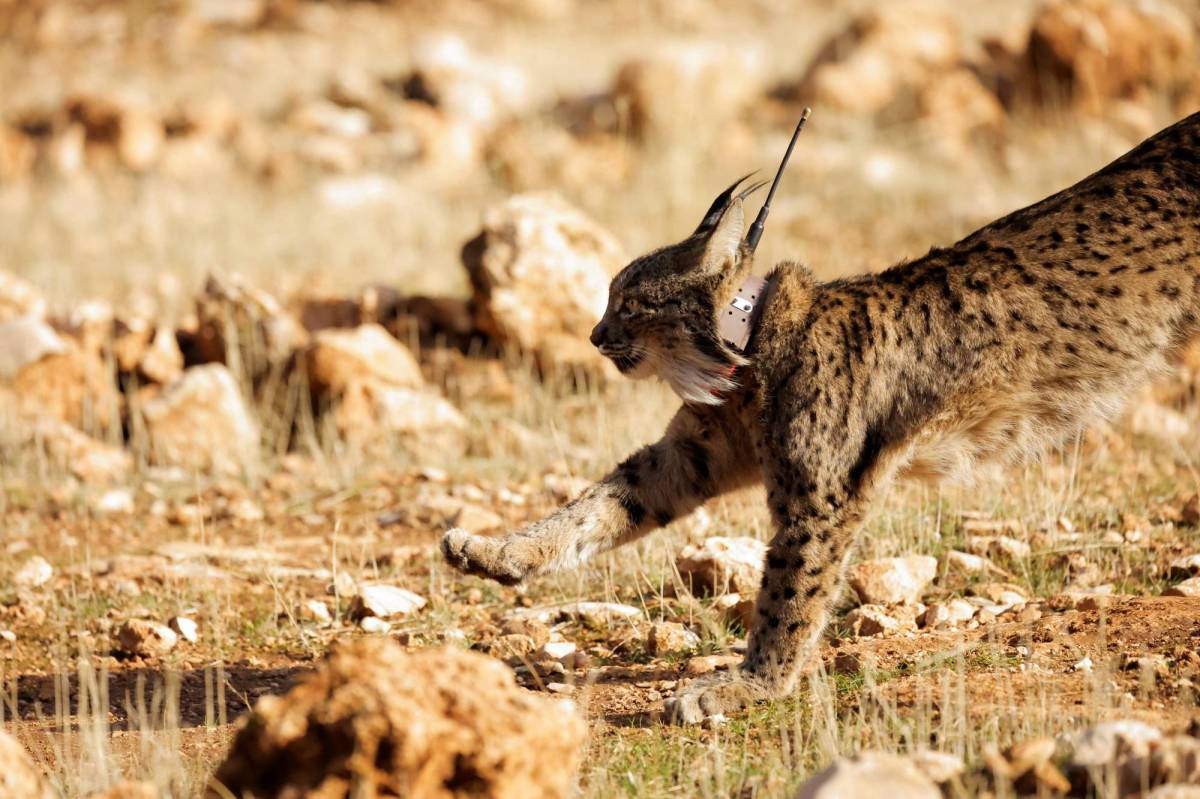Illegally released lynx captured – NatureScot statement – Illegally released lynx captured – NatureScot statement: A wild lynx, illegally released into the Scottish Highlands, has been captured. NatureScot’s swift response highlights the complexities of wildlife conservation and the legal repercussions of such actions. This incident raises questions about the motivations behind the release, the lynx’s welfare, and the broader implications for future lynx reintroduction programs. We’ll explore the official statement, the animal’s condition, and the ongoing investigation.
This unexpected event has sparked considerable public interest and media attention. The timeline, from initial reports to the eventual capture, is crucial in understanding the situation. We will also delve into potential motivations, ranging from conservation activism to criminal activity, and discuss the environmental impact of this illegal release. Finally, we’ll examine the lessons learned and the need for stricter regulations to prevent similar incidents in the future.
NatureScot’s Response to the Illegal Lynx Release: Illegally Released Lynx Captured – NatureScot Statement
The illegal release of a lynx in Scotland prompted a swift and decisive response from NatureScot, the Scottish nature agency. Their actions highlight the complexities of wildlife crime and the importance of careful planning in any reintroduction program. This section details NatureScot’s official statement, the actions taken, and the potential legal consequences.
NatureScot’s Official Statement and Actions

NatureScot’s official statement condemned the illegal release, emphasizing the potential risks to both the lynx and the wider ecosystem. They confirmed the capture of the animal and detailed the ongoing assessment of its health and welfare. Actions taken included immediate capture and veterinary assessment of the lynx, investigation into the circumstances of the release, and collaboration with Police Scotland to identify and prosecute those responsible.
A thorough investigation is underway to determine the origin of the lynx and the individuals involved in its illegal release.
So, the illegally released lynx have been captured, according to the NatureScot statement. It’s a pretty wild story, a bit like hearing about something completely unrelated, like Liam Payne’s medical cause of death confirmed as polytrauma. That’s a shocking contrast, isn’t it? Anyway, back to the lynx – NatureScot’s next steps are key to preventing future escapes.
Timeline of Events
The timeline begins with an initial report of a lynx sighting, followed by a period of investigation and tracking. This culminated in the eventual capture of the animal. Specific dates and times are not yet publicly available due to the ongoing investigation, but the process involved coordinated efforts between NatureScot, Police Scotland, and potentially other wildlife agencies and experts.
Potential Legal Ramifications
Individuals involved in the illegal release face potential prosecution under various wildlife protection laws. The penalties could range from substantial fines to imprisonment, depending on the severity of the offense and the evidence gathered during the investigation. The illegal release could also result in civil liabilities, such as compensation for any damage caused.
The Lynx’s Condition and Welfare
The well-being of the captured lynx is paramount. This section details its condition, the immediate care provided, and the long-term plan for its future. The animal’s health parameters are summarized in the table below.
The Lynx’s Physical and Mental State and Immediate Care
Upon capture, the lynx underwent a thorough veterinary examination to assess its physical and mental health. Initial reports suggest the animal was in relatively good physical condition, though the stress of its illegal release and subsequent capture may have affected its mental state. Immediate care focused on providing a safe, quiet environment, hydration, and nutritional support. Veterinary staff monitored its vital signs and provided any necessary treatment.
Long-Term Plan for the Lynx

The long-term plan for the lynx depends on the outcome of ongoing assessments. Options may include relocation to a suitable sanctuary or, if deemed appropriate and feasible, a potential return to a controlled environment as part of a future, carefully planned reintroduction program. The decision will consider the animal’s overall health, behavioral assessment, and the need to prevent future illegal releases.
Lynx Health Parameters
| Parameter | Before Capture (Estimate) | After Capture |
|---|---|---|
| Weight (kg) | 15-20 | 16.5 |
| Heart Rate (bpm) | N/A | 120 |
| Body Temperature (°C) | N/A | 38.5 |
| Hydration Level | N/A | Adequate |
Motivations Behind the Illegal Release
Understanding the motivations behind the illegal release is crucial for preventing future incidents. Several possible explanations exist, ranging from well-intentioned but misguided conservation efforts to criminal activity. This section explores these potential motivations and their implications.
Potential Motivations and Their Categorization
Possible motivations can be categorized as follows: Conservation: A misguided attempt to establish a wild lynx population. Activism: A deliberate act of protest or raising awareness about conservation issues. Criminal Activity: Illegal trafficking or other criminal enterprises involving the animal. Each category requires a different approach to prevention and mitigation.
Environmental and Ecological Impacts
The illegal release poses several potential risks. The introduced lynx might compete with native species, disrupt the existing ecosystem balance, or spread disease. The lack of proper planning and monitoring increases the risk of negative consequences for both the lynx and the environment.
Public Perception and Media Coverage
The illegal lynx release generated significant public interest and media attention. This section examines public reaction and media coverage, proposing a hypothetical public awareness campaign to address the issue responsibly.
Public Reaction and Media Analysis, Illegally released lynx captured – NatureScot statement
Public reaction was mixed, ranging from concern for the lynx’s welfare to criticism of the individuals responsible. Media coverage varied, with some outlets focusing on the animal’s plight, while others highlighted the legal and ecological implications. Responsible reporting emphasized the importance of balanced information and avoiding sensationalism.
Hypothetical Public Awareness Campaign
A public awareness campaign could emphasize the importance of following proper channels for wildlife conservation and the potential negative consequences of illegal actions. It should educate the public about the legal ramifications and the risks associated with releasing non-native species into the wild.
The Broader Implications for Lynx Conservation

The incident underscores the challenges and opportunities in lynx conservation and reintroduction programs. This section explores the impact of the illegal release on ongoing efforts and the need for stricter regulations.
Impact on Conservation Efforts and Future Reintroductions
The illegal release highlights the need for meticulous planning and risk assessment in any wildlife reintroduction program. Future efforts must prioritize public engagement, robust monitoring, and strict enforcement to prevent similar incidents. This event underscores the importance of collaboration between conservationists, government agencies, and law enforcement.
Role of Responsible Wildlife Management and Stricter Regulations
Responsible wildlife management requires a comprehensive approach, encompassing research, community engagement, and strong legal frameworks. Stricter regulations and robust enforcement mechanisms are crucial to deterring illegal activities and protecting both native ecosystems and reintroduced species. Collaboration between international agencies is also key to prevent the illegal trafficking of animals.
Illustrative Depiction of the Situation
This section provides a vivid description of the landscape, the capture process, and the lynx’s appearance.
Landscape Description
The lynx was captured in a remote, sparsely populated area characterized by a mix of moorland, woodland, and rocky outcrops. The terrain was challenging, with steep slopes and dense vegetation, making the capture operation complex. The area offered a combination of cover and open spaces, reflecting the lynx’s natural habitat preferences.
Capture Process Narrative
The capture involved a team of experienced wildlife professionals utilizing specialized equipment and techniques to minimize stress on the animal. The lynx initially showed signs of apprehension, but ultimately allowed itself to be safely tranquilized and secured without significant incident. The team prioritized the animal’s safety and well-being throughout the process.
Lynx’s Appearance
The lynx was a young adult, displaying the characteristic spotted coat typical of its species. Its fur was a mix of tawny and brown, with distinctive dark spots. It possessed a powerful build, long legs, and a noticeably bushy tail. The lynx exhibited a cautious and alert demeanor throughout the capture process.
Final Wrap-Up
The capture of the illegally released lynx underscores the delicate balance between conservation efforts and the need for responsible wildlife management. NatureScot’s response demonstrates the importance of swift action and collaboration in addressing such incidents. The investigation into the motivations behind the release, coupled with ongoing monitoring of the lynx’s welfare, will hopefully contribute to more effective conservation strategies and stronger regulations to prevent similar situations from arising.
This event serves as a stark reminder of the complexities involved in wildlife reintroduction and the potential consequences of unauthorized actions.
Helpful Answers
What type of lynx was it?
The statement doesn’t specify the exact subspecies, but further details may emerge during the investigation.
Where exactly was the lynx released?
The precise location is likely being withheld to protect the animal and prevent further disturbances.
So, the illegally released lynx were captured – a NatureScot statement confirmed this. It’s a pretty wild story, especially when you consider the contrast to other news, like the sentencing of Stuart Hogg for domestic abuse offences – check out the details here: Stuart Hogg sentenced for domestic abuse offences – Police Scotland. The whole thing highlights how different kinds of news can impact a community.
Anyway, back to the lynx – hopefully, this situation is resolved safely.
What are the potential penalties for illegal wildlife releases?
Penalties can vary significantly depending on the specific legislation and the circumstances, potentially including substantial fines and imprisonment.
What is NatureScot’s long-term plan for the lynx?
So, the illegally released lynx were captured, per the NatureScot statement – a whole lot of drama, right? It reminds me of the emotional rollercoaster I felt watching All My Children’s Cameron Mathison Shares Devastating Video of his recent health struggles; it really puts things in perspective. Anyway, back to the lynx – hopefully, this situation will lead to better wildlife management practices in the future.
Their plan will likely involve assessing its health, determining its suitability for reintroduction (possibly to a different location), or potentially finding it a suitable permanent home in a sanctuary.
